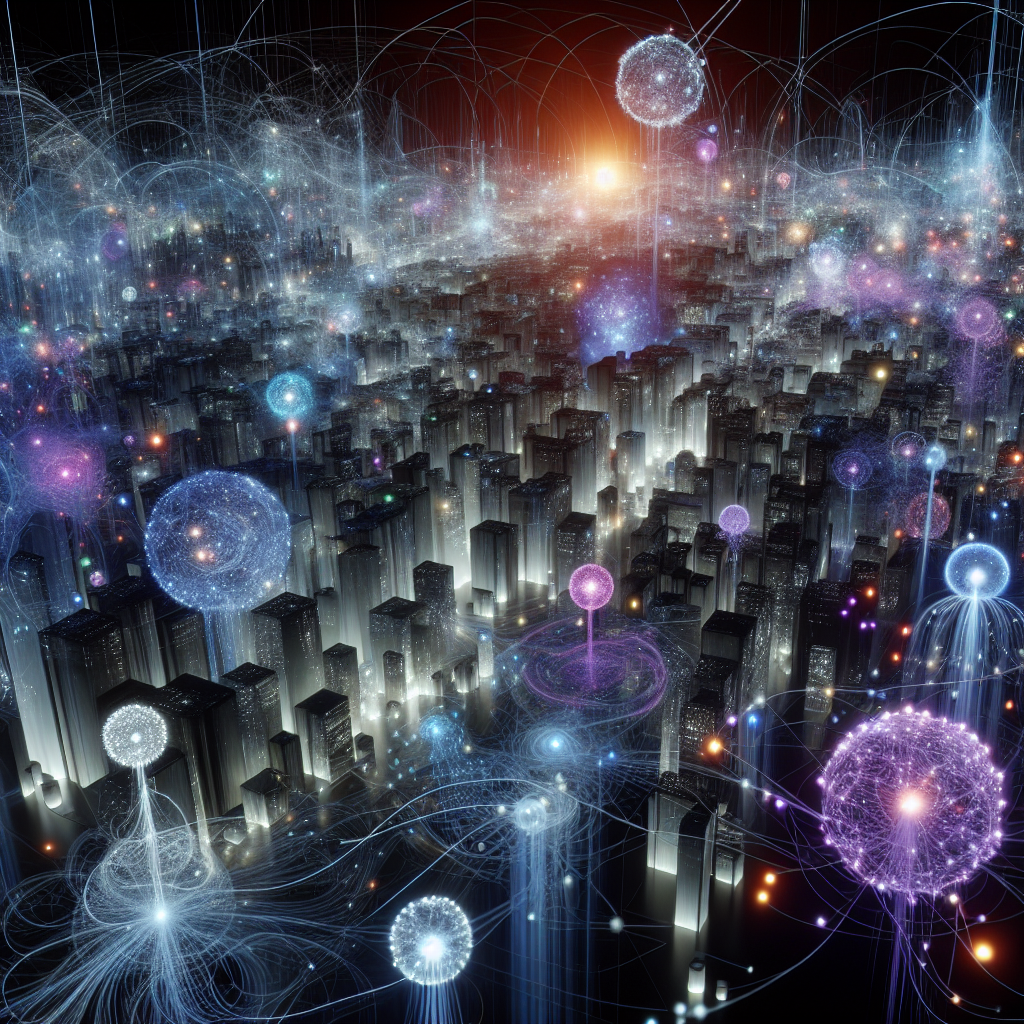Multi-Agent Collaboration – Emerging Trends

Introduction
In today’s rapidly evolving technological landscape, businesses are increasingly turning to Artificial Intelligence (AI) to drive innovation and solve complex problems. Among these AI paradigms, multi-agent systems stand out as a revolutionary approach, offering unparalleled potential in enhancing problem-solving capabilities through decentralized decision-making. Imagine a scenario where multiple AI agents collaborate seamlessly, each contributing unique insights and abilities to tackle challenges that are beyond the reach of individual agents or human teams alone.
Recent studies have shown that multi-agent collaboration can boost operational efficiency by up to 30% in specific industries, highlighting its transformative power. As organizations seek to leverage this technology, understanding emerging trends is crucial for staying ahead. This blog explores these trends and their impact on collaborative AI and decentralized decision-making, offering actionable insights for business professionals and decision-makers.
Understanding Multi-Agent Systems
What Are Multi-Agent Systems?
At its core, a multi-agent system (MAS) comprises multiple autonomous agents interacting within an environment. Each agent operates independently yet collaboratively towards common or individual goals. These systems have found applications in diverse fields such as robotics, logistics, healthcare, and more.
For instance, in the field of robotics, MAS has enabled advancements like swarm robotics where a group of robots work together to achieve tasks like search-and-rescue operations or environmental monitoring. This collaboration mirrors nature’s efficiency, much like how ants collectively gather food or bees pollinate flowers.
Advantages of Multi-Agent Collaboration
Enhanced Problem-Solving: By pooling together the capabilities of various agents, MAS significantly enhances problem-solving efficiency. Each agent brings a unique perspective and set of skills to address complex issues.
Scalability: The modular nature of MAS allows them to scale seamlessly across different tasks and industries. This adaptability is crucial in dynamic environments where requirements can change rapidly.
Resilience: With multiple agents working in tandem, MAS can offer robust solutions even if some components encounter issues. This redundancy ensures continuity and reliability in operations.
Increased Innovation: The diversity of approaches within a multi-agent system fosters innovation as agents learn from each other’s strategies and outcomes.
Emerging Trends in Multi-Agent Systems
Seamless Inter-Agent Communication
One of the most critical developments in multi-agent systems is the advancement in seamless inter-agent communication. Effective communication protocols are essential for coordination, decision-making, and task execution among agents. Companies like OpenAI have been at the forefront of developing sophisticated algorithms that enable this level of interaction.
For example, OpenAI’s work on language models has facilitated more naturalistic communication between AI agents, allowing them to interpret context better and respond appropriately in various scenarios. This advancement is crucial for applications such as autonomous vehicles where real-time data sharing between agents can significantly enhance safety and efficiency.
Decentralized Decision-Making
Decentralized decision-making is another key trend driving the evolution of MAS. Unlike traditional centralized systems, decentralized models distribute decision-making authority across all agents, allowing for more flexible and responsive actions. This approach not only enhances resilience but also empowers individual agents to make informed decisions based on local information.
The European Union Robotics Initiative has been instrumental in promoting decentralized frameworks within robotics, emphasizing the importance of autonomy at both micro and macro levels. By encouraging innovation in this area, they aim to create more adaptable and intelligent systems capable of tackling complex real-world challenges.
Enhanced Learning Capabilities
With advancements in machine learning algorithms, MAS are now capable of continuous improvement through experience-based learning. This capability enables agents to refine their strategies over time, leading to more efficient problem-solving processes.
For instance, the MIT Media Lab has been exploring reinforcement learning techniques that allow agents within a multi-agent system to learn from interactions with their environment and each other. These advancements promise significant improvements in fields like supply chain management where dynamic conditions require constant adaptation and optimization.
The Impact of Emerging Trends on Efficiency
The integration of these emerging trends into MAS is poised to dramatically enhance operational efficiency across industries. For instance, in logistics, decentralized decision-making allows for real-time route adjustments based on traffic conditions or delivery priorities. This flexibility can reduce transit times and fuel consumption, leading to cost savings and lower environmental impact.
In healthcare, seamless communication between diagnostic tools, treatment plans, and patient monitoring systems ensures that all components work harmoniously towards optimal patient outcomes. This coordinated effort reduces the risk of errors and enhances overall care quality.
Case Studies in Multi-Agent Collaboration
Autonomous Vehicles
One notable example of multi-agent collaboration is in autonomous vehicle technology. Companies like Waymo are leveraging MAS to enable vehicles to communicate with each other, road infrastructure, and even pedestrians. By sharing data on speed, direction, and environmental conditions, these agents can collectively ensure safe navigation through complex urban environments.
The result? Reduced accidents, optimized traffic flow, and a significant step towards fully autonomous transportation systems.
Smart Grids
In the energy sector, smart grids are utilizing MAS to balance supply and demand effectively. Each component within the grid—such as power plants, substations, and consumer devices—functions as an agent that communicates with others to maintain stability and efficiency.
By implementing decentralized decision-making, these systems can quickly adapt to changes in energy consumption patterns or production capabilities. This agility ensures a reliable power supply while minimizing waste and operational costs.
Actionable Insights for Businesses
Invest in Inter-Agent Communication: Enhance the communication protocols within your multi-agent system to ensure seamless data sharing and coordination.
Embrace Decentralization: Distribute decision-making authority across agents to increase flexibility and responsiveness, especially in dynamic environments.
Leverage Machine Learning: Implement continuous learning algorithms that allow agents to adapt based on experience, leading to more efficient problem-solving over time.
Stay Informed About Trends: Keep abreast of the latest developments in MAS technology and related fields to maintain a competitive edge.
Collaborate with Research Institutions: Partner with organizations like MIT Media Lab or the European Union Robotics Initiative to gain insights into cutting-edge research and innovations.
The Future of Multi-Agent Collaboration
As we look towards the future, the role of multi-agent collaboration in driving innovation and efficiency across industries is set to grow exponentially. Emerging trends such as improved communication protocols, decentralized decision-making, and enhanced learning capabilities will continue to redefine what’s possible with MAS.
Industries ranging from healthcare to logistics are already witnessing transformative changes thanks to these advancements. As more organizations adopt multi-agent systems, we can expect even greater strides in operational efficiency and innovation.
Conclusion
Multi-agent systems represent a significant advancement in AI technology, offering enhanced problem-solving capabilities through decentralized decision-making and seamless inter-agent communication. As these systems continue to evolve, their impact on operational efficiency across various industries will only increase. By embracing multi-agent collaboration, businesses can unlock new levels of innovation and competitiveness.
Ready to transform your business with AI? Explore how our AI Agentic software development and AI Cloud Agents services have empowered companies from healthcare to logistics to implement cutting-edge solutions that enhance efficiency and drive innovation. Let us guide you through the intricacies of deploying effective multi-agent collaboration tailored to your specific needs.
Contact us today for a personalized consultation on harnessing the power of collaborative AI. Visit our contact page or use one of the contact forms available on our website to get started. We look forward to helping you leverage the potential of MAS in your organization!
